Ah, drainage—often hailed as the unsung hero in the world of plant care.
You’ve heard it before: Good drainage is crucial for healthy plants. It keeps roots from rotting and ensures they get the oxygen they need.
But, do you know what plants don’t need drainage at all?
Well, what if I told you that not all plants are demanding the well-draining soils you read so much about? That’s right!
There’s a fascinating variety of resilient plants that not only tolerate but actually thrive in low-drainage conditions.
If you’ve been grappling with waterlogged soil or if you’ve ever felt limited by areas in your garden where water tends to pool, this article is your lifeline.
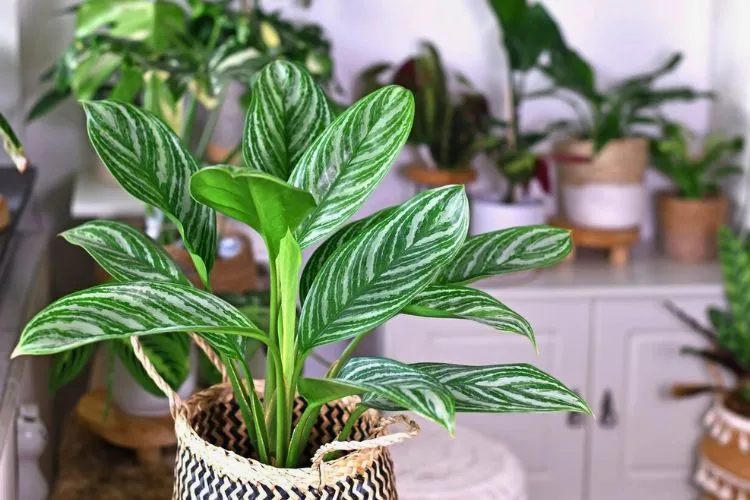
We’re diving into the captivating realm of plants that defy conventional wisdom.
You’ll discover types like succulents, bog plants, and even some household favorites that are perfectly content in less-than-ideal drainage situations. Say goodbye to the drainage dilemma and hello to a lush, thriving garden!
Table of Contents
Understanding Drainage and Its Significance
When we talk about drainage in the context of plant care, we’re referring to the soil’s ability to move excess water away from plant roots.
In other words, good drainage ensures that water doesn’t stagnate and turn your soil into a mushy, oxygen-deprived swamp.
Imagine sitting in a bath for too long; you get wrinkly, right? Similarly, when plants sit in waterlogged soil, their roots essentially “drown,” depriving them of vital oxygen.
Now, why is oxygen so essential? Roots absorb not just water but also oxygen from the soil. In poorly drained soil, the water pushes out the air, leading to oxygen-starved roots.
Over time, these conditions can lead to a host of problems, the most notorious being root rot—a condition as unpleasant as it sounds.
In addition, stagnant water creates a breeding ground for various fungi and pests. These issues can cascade into a domino effect, weakening the plant and making it susceptible to diseases it could otherwise fight off easily.
You might also face nutrient leaching in waterlogged conditions. Essential nutrients get washed away, leaving your plant malnourished and pale. On the flip side, poor drainage can also cause nutrient build-up, leading to imbalances that manifest as odd discolorations or stunted growth.
So, it’s evident that good drainage is a cornerstone of plant health for most species. But what if your garden area doesn’t meet the “well-drained soil” criteria?
Don’t worry! Read on to discover plants that defy this golden rule and are quite happy in water-retentive soils.
What Plants Don’t need Drainage? (An Exclusive List)
If you’ve been frustrated by soggy patches in your garden or waterlogged potted plants, get ready for some good news. There’s an intriguing array of plants that laugh in the face of drainage woes.
These resilient species have adapted to low-drainage environments, liberating you from the constant stress over waterlogged soil. Intrigued? Let’s delve into the captivating world of these drainage-defying plants.
Succulents and Cacti
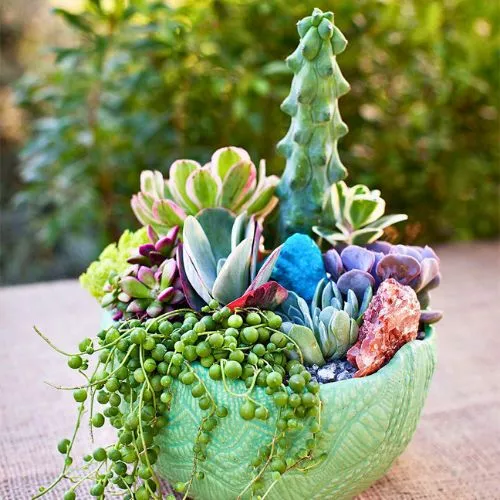
I bet you didn’t see this one coming! While succulents and cacti are famous for their drought-tolerance, some species are surprisingly adaptable to low-drainage conditions.
Native to arid and semi-arid environments, these plants have evolved to store water in their leaves, stems, or roots. This means they’re used to occasional bouts of excess water, like the infrequent but heavy rainfall they’d experience in their natural habitats.
Some varieties, such as the Christmas Cactus (Schlumbergera) and the Snake Plant (Sansevieria), can cope with less-than-ideal drainage. These succulents store ample water, meaning that even if the soil remains wet for a longer period, their unique water-storage mechanisms can handle it.
However, don’t mistake this for a free pass to water excessively. Moderation is key.
Bog Plants
At the other end of the spectrum, we have bog plants. These are plants that not only tolerate poor drainage but actually revel in it.
If you’ve got an area in your yard that retains water, bog plants can be your best friend.
These include species like pitcher plants (Sarracenia), sundews (Drosera), and the beautiful but carnivorous Venus flytrap (Dionaea muscipula).
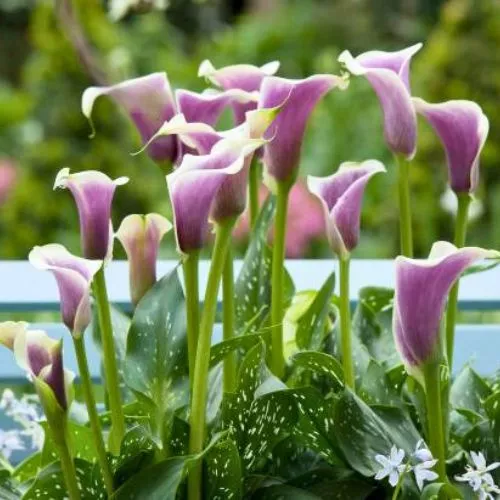
Bogs are naturally low-drainage environments rich in peat, and the plants that thrive there have developed fascinating adaptations. Many carnivorous plants are native to bogs, which lack essential nutrients. These plants make up for this deficit by capturing and digesting insects, making them a fascinating addition to any garden.
Air Plants
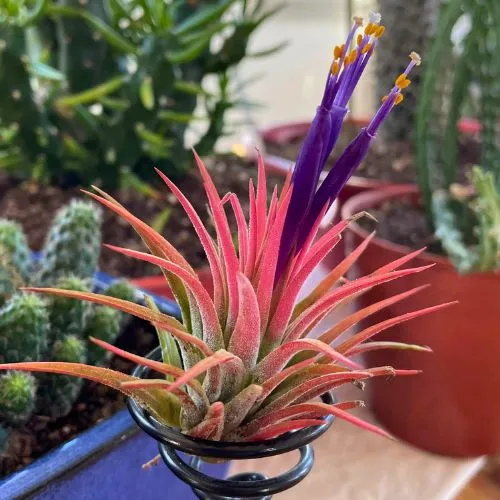
Hold onto your gardening gloves because air plants are about to redefine what you think you know about drainage. Also known as Tillandsia, these unique plants don’t even need soil, to begin with.
They absorb nutrients and moisture right from the air through tiny specialized cells on their leaves.
So, the notion of drainage becomes almost irrelevant for these floating wonders.
Ideal for hanging terrariums or mounted displays, air plants liberate you from the typical drainage concerns. They thrive in high-humidity environments and need just an occasional misting or brief soaking.
You can even grow them in your bathroom to take advantage of the higher humidity levels post-shower. If you’re looking to add a modern, almost alien touch to your living spaces, air plants are your go-to.
Aquatic Plants
When we talk about plants that laugh off drainage concerns, aquatic plants take the crown.
Designed to live submerged in water, or with their roots consistently moist, these plants are the epitome of low-drainage adaptability.
Think water lilies (Nymphaea), lotus (Nelumbo), and duckweed (Lemna) for surface dwellers, or Anubias and Java Fern for fully submerged varieties.
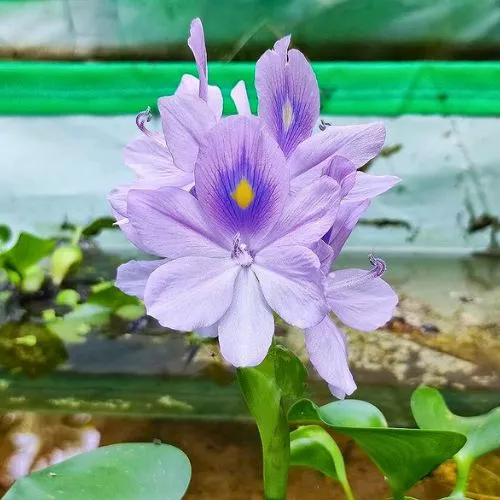
Growing aquatic plants opens up a realm of possibilities. You could build a pond in your garden, start an aquarium, or even a hydroponic system. Imagine never having to fret over watering schedules again!
Just keep in mind that while these plants don’t require drainage, they do need a stable environment. Factors like water temperature, pH levels, and nutrient balance become crucial in their care.
Wetland Plants
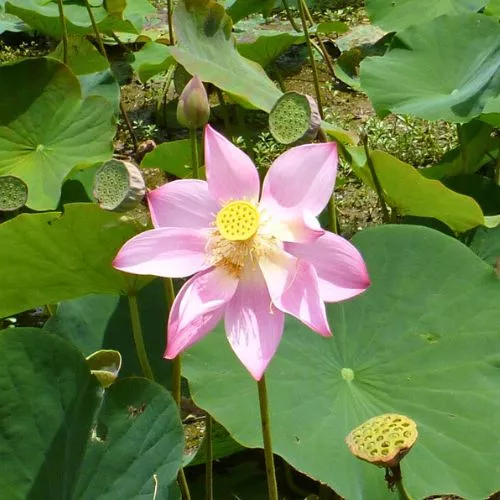
Picture a lush, marshy area teeming with life—welcome to the natural habitat of wetland plants.
These resilient species are designed to survive in waterlogged soils with poor drainage.
They’re the rockstars of swampy, marshy conditions. Plants like cattails (Typha), bulrushes (Schoenoplectus), and pickerelweed (Pontederia cordata) dominate this arena.
If you have a soggy spot in your yard that you’ve nearly given up on, consider embracing the wetness and turning it into a small wetland habitat. It’s not only a beautiful addition to your garden, but it can also become a sanctuary for local wildlife.
Frogs, dragonflies, and even some birds may find a haven in your mini-wetland. Before diving in, however, check local regulations about creating wetlands, as there may be restrictions.
Snake Plants
If there was an award for the most adaptable houseplant, the Snake Plant, or Sansevieria, would undoubtedly be a top contender.
Not only can these plants withstand low light conditions, but they’re also champs when it comes to dealing with less-than-perfect drainage.
Native to West Africa, these plants have evolved to handle erratic water availability.
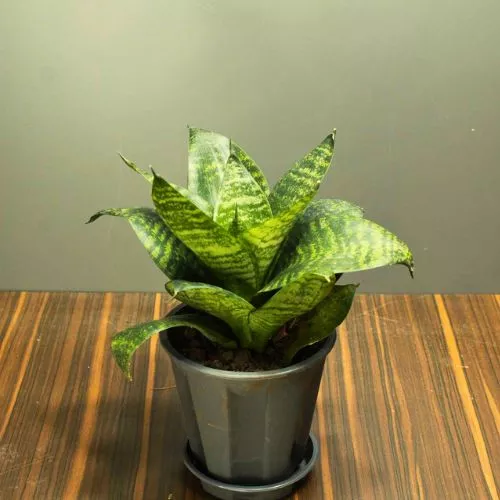
Their thick, waxy leaves store water, making them incredibly drought-tolerant. This water storage ability also allows them to cope with soil that stays damp for an extended period.
Snake plants are an excellent option if you’re a forgetful waterer or if you live in a climate where humidity keeps the soil moist longer than typical houseplants would tolerate.
Spider Plants
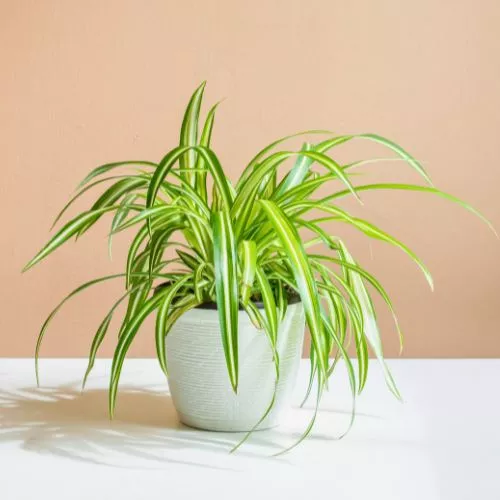
Last but certainly not least, let’s talk about the darling of houseplants, the Spider Plant, or Chlorophytum comosum.
If you’re looking for a resilient, forgiving plant that won’t hold a grudge against imperfect drainage, look no further.
Originally from tropical and southern Africa, these beauties have adapted to a range of conditions, making them a favorite among both novice and experienced gardeners.
Their long, arching leaves and baby “spiderettes” make them perfect for hanging baskets or high shelves. And while they prefer well-draining soil, they’re forgiving if you happen to have a pot with less-than-ideal drainage.
Their root system is robust enough to handle periods of water retention, provided it’s not excessive. In essence, Spider Plants offer the best of both worlds—a captivating appearance and a hearty disposition that can withstand a range of growing conditions.
Characteristics of Plants That Don’t Need Drainage
So, we’ve introduced you to an exciting range of plants that defy the usual drainage norms. But what makes them so special? Why can they flourish where others falter?
Let’s delve into the specific traits and adaptations that enable these unique plants to thrive in water-retentive soils.
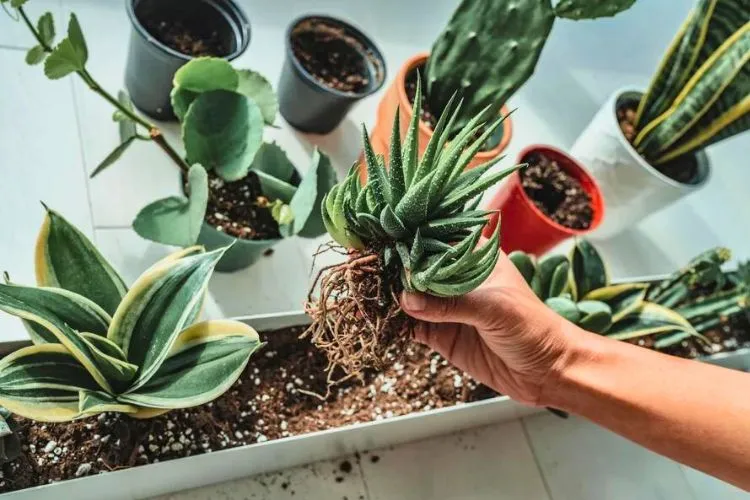
Root Structures
Ah, the underground universe of roots—this is where a lot of the magic happens. For many plants, poor drainage is a death sentence due to root rot.
But for our low-drainage champions, their root structures have evolved uniquely to thrive. For instance, wetland plants often have aerenchyma, specialized tissue that allows them to transport oxygen to their submerged roots.
In the case of air plants, who needs roots for nutrient absorption when you can take what you need straight from the air? Snake plants have thick, rhizomatous roots that not only store water but also tolerate longer periods of water retention.
Water Storage Mechanisms
When it comes to survival, one of the most crucial adaptations for plants that can thrive in low-drainage areas is their ability to store water.
Think of it as their natural reservoir, a built-in backup plan for times when conditions are less than favorable. This mechanism varies from plant to plant but serves the same essential function: to provide a lifeline in the face of environmental stress.
Take succulents, for example. They are often likened to camels of the plant world. Their thick, fleshy leaves, stems, or even roots serve as water storage units. These tissues are specially designed to hold onto water, which the plant can draw upon during dry spells.
Aquatic plants take a different approach. They live in water-abundant environments but still have to manage how they store or utilize this water to avoid issues like rot. Many aquatic plants have buoyant tissues that enable them to float, meaning they’re never too far from their water source.
In the realm of houseplants, let’s revisit the Snake Plant. Its capacity to store water in its leaves serves as a buffer system. The water stored in the leaves can be used when the soil stays damp for too long, essentially serving as an emergency reserve.
So, whether it’s storing water in specialized tissues or leveraging their environment’s natural resources, these plants have developed fascinating mechanisms to ensure they always have a sip of water when they need it.
Leaf Adaptations
The leaves are the plant’s main solar panel, absorbing sunlight for photosynthesis. But for plants that can live in low-drainage areas, the leaves often do double duty.
For instance, the water-repellent leaves of wetland plants allow them to survive in humid, marshy conditions without succumbing to mold or disease.
Air plants have specialized cells called trichomes on their leaves that can absorb moisture from the air. Even the waxy, water-storing leaves of succulents serve as a mechanism for survival, enabling these plants to retain water and survive in arid conditions.
Choosing the Right Plants for Low-Drainage Areas
So you’re sold on the idea of cultivating plants that scoff at the “must-have good drainage” rule. Awesome! But how do you choose the right ones for your specific situation?
Worry not; in this section, we’ll guide you through the process of selecting plants that will not only survive but thrive in low-drainage areas.
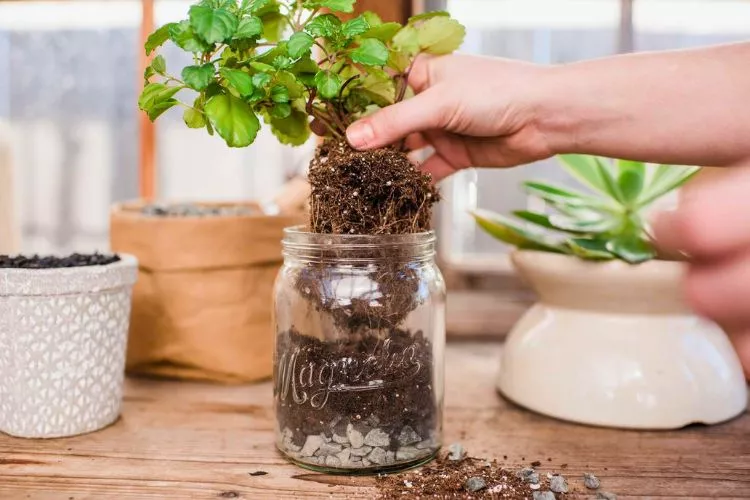
Researching Native Species
First thing’s first: consider what’s native to your neck of the woods. Local plants are already acclimated to your area’s general soil conditions, climate, and even local pests.
This familiarity gives them a head start, making them more likely to thrive—even in less-than-perfect drainage conditions.
To find out which native species fit the bill, you might start by consulting local botanical gardens or university extension services.
These organizations often offer native plant lists suited for various conditions, including low-drainage areas. Don’t overlook local gardening forums and social media groups; real-world advice from fellow gardeners can be invaluable.
Consulting with Nurseries or Botanists
Sometimes, you’ve got to seek out the experts to get the down-low. Visiting local nurseries, garden centers, or even scheduling a consultation with a botanist can offer insights that are tailored specifically to your needs.
These professionals often have years—sometimes decades—of experience and can provide recommendations that you won’t find in generic plant guides or blogs.
Engage them with specific questions about your low-drainage area. Is it mostly shady or sun-drenched? Is the soil sandy, clayey, or somewhere in between?
This information can help them make more personalized suggestions, ensuring that the plants you choose will not only survive but truly flourish in your unique conditions.
Another bonus? They can often pinpoint potential challenges you may face and provide strategies to overcome them, saving you both time and future headaches.
Considering Microclimates
Ah, the nuances of Mother Nature! Even within the same garden or home, different areas can have wildly different conditions, also known as microclimates.
You might have a damp, shady corner just a few feet away from a sun-soaked patch. Recognizing these microclimates can be a game-changer in choosing the right plants for low-drainage areas.
For instance, that moist corner of your garden might be perfect for wetland plants, while the sunnier area could be better suited for certain types of succulents.
You could also have a window sill that receives more humidity due to proximity to a bathroom, making it ideal for air plants.
When considering microclimates, you also have to think about the seasons. Does a specific area get more waterlogged during the rainy season but dries up in the summer? Knowing these details will help you select plants that can adapt to these fluctuating conditions.
How to care for plants that don’t need drainage?
Congratulations, you’ve picked out your dream team of low-drainage plants! But now comes the next big question: how do you keep them happy and thriving?
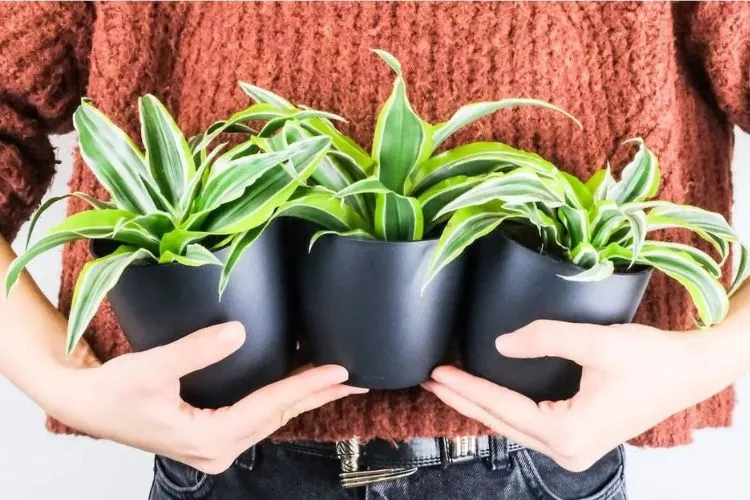
While these plants are generally low-maintenance, they still have their own sets of needs and quirks. In this section, we’ll dive into the essential care tips to keep your low-drainage plants flourishing for years to come.
Water Less Frequently Than Plants That Do Need Drainage
The instinctual move for many new plant owners is to water generously. However, when it comes to low-drainage plants, moderation is key. You may find that these plants only need watering once every week or two, as opposed to every few days. The reason?
Many of these plants are adapted to environments where water is scarce or where the soil retains moisture for longer periods.
Overwatering can lead to root rot and other complications, which you definitely don’t want. To nail this down, use a soil moisture meter or even your finger to gauge the moisture level. If the top inch (approximately 2.5 cm) of soil feels dry, it’s a good indicator that it’s time to water.
Use a Well-Draining Potting Mix
While it sounds counterintuitive, using a well-draining potting mix for your low-drainage plants is actually a stroke of genius. These special mixes ensure that while water is retained, it’s not suffocating the roots, which can lead to rot.
A well-draining mix is particularly beneficial for plants that are native to areas with occasional heavy rains followed by dry spells. Ingredients like perlite, vermiculite, or coarse sand can work wonders here.
Think of it as creating a “Goldilocks zone” for your plants’ roots—not too wet, not too dry, but just right. By using a well-draining mix, you’re setting the stage for a more resilient plant that is better equipped to deal with variations in watering and climate conditions.
Add a Layer of Pebbles or Gravel to the Bottom of the Pot
Let’s debunk a myth: placing pebbles or gravel at the bottom of your pot isn’t a magic bullet for drainage.
However, it does serve a purpose—creating a slight reservoir where excess water can settle without drowning the roots. Think of it as an added layer of insurance against overwatering.
This is especially useful for low-drainage plants that don’t want to be sopping wet but also don’t mind a little extra moisture now and then.
Additionally, those pebbles or gravel add a bit of heft to the pot, providing a more stable foundation. This is particularly helpful for top-heavy plants that might be prone to tipping over.
Re-Pot the Plant Every 2-3 Years
A growing plant is a happy plant, but eventually, it will outgrow its home. That’s when it’s time to upsize. You see, a too-small pot can restrict root growth and make efficient water absorption a struggle. Re-potting every 2-3 years is like upgrading to a bigger apartment—it gives your plant the space it needs to spread out and flourish.
Aim for a new pot that’s roughly 2 inches (about 5 cm) larger in diameter than the existing one. This allows enough room for growth while ensuring that your plant doesn’t feel ‘lost’ in a too-large space. It’s also an excellent opportunity to inspect the root health and refresh the soil, which may have become nutrient-depleted over time.
Regularly Check for Pests and Diseases
Even the hardiest plants aren’t entirely immune to the occasional aphid invasion or fungal issue. If you’re dealing with low-drainage plants, the heightened moisture levels can sometimes attract unwanted guests. Make it a habit to inspect your plants routinely.
Check the undersides of leaves, the soil, and even the pot itself for any signs of pests or diseases. Yellowing leaves, mold spots, or a general lackluster appearance could indicate trouble. The earlier you identify these issues, the easier they’ll be to manage. Don’t forget, a little vigilance can go a long way in plant parenting.
Prune Dead or Yellow Leaves and Faded Flowers
A little grooming never hurt anyone, plants included. As you make your routine checks for pests and diseases, also keep an eye out for any yellow or brown leaves and snip them off.
Do the same for faded flowers. Why, you ask? Well, this isn’t just about aesthetics, although a well-groomed plant is indeed more pleasing to look at.
Removing dead or dying plant parts can redirect energy back to healthier sections, encouraging more robust growth.
Plus, good air circulation is vital for preventing mold and other diseases—something that’s especially true for plants that thrive in more water-retentive soils. So go ahead, grab those pruning shears and give your plant a little haircut. It’s for their own good!
Potential Challenges and How to Overcome Them
Ah, the plot thickens! Just when you thought you had this low-drainage plant care down to a fine art, let’s throw in a curveball or two.
Because, let’s be real, even plants that love to wade in the water have their own set of challenges.
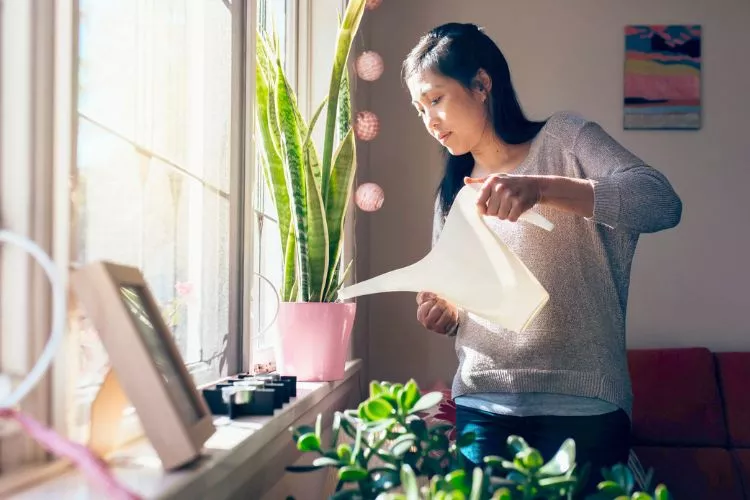
But don’t sweat it—being forewarned is being forearmed. We’re about to delve into some of the most common issues you might encounter and how to tackle them like a pro. So, keep reading; your green thumb will thank you.
Root Rot Prevention
You might think that root rot is a plant parent’s worst nightmare, and you wouldn’t be entirely wrong. It’s like the boogeyman of the plant world, lurking especially where the drainage is poor.
Even plants that usually thrive in soggy conditions aren’t entirely immune. Root rot occurs when excess water stifles the oxygen supply to the roots, leading to decay.
So, how do you keep this dreaded plant disease at bay? First, don’t be too generous with the watering can. Even in low-drainage conditions, plants need a breathing room—literally. When you do water, make sure you’re doing it at the right time; usually, when the top layer of soil feels dry to the touch.
Additionally, consider incorporating organic matter like compost into the soil to improve its structure. This helps in maintaining an acceptable level of moisture without tipping into waterlogging territory.
And remember, well-draining potting mix isn’t just a suggestion; it’s a staple in preventing root rot.
Last but not least, keep an eye on your plant’s leaves. Yellowing or wilting can be early warning signs of root rot. If you notice any of these symptoms, you may have to act fast and possibly consider repotting your plant into fresh, well-draining soil.
In short, root rot is manageable. You just need to be vigilant and proactive in your care. So put that worry to bed; you’ve got this!
Pest and Disease Management
You know the old saying, “An ounce of prevention is worth a pound of cure”? It couldn’t be truer when it comes to keeping pests and diseases at arm’s length.
Now, while plants that thrive in low-drainage areas may not need as much babysitting, they’re not invincible.
Firstly, take some time each week to inspect your plant’s leaves, both the top and the underside, where pests like to hide. You’re looking for signs like discoloration, spots, or tiny critters themselves.
Insects like aphids and spider mites can still find a comfortable home in plants that live in water-retentive soils. And believe me, you don’t want them settling in!
If you do spot pests, a gentle insecticidal soap or neem oil can work wonders. It’s best to tackle the problem as early as possible to prevent a full-blown infestation.
Diseases like mold and fungal infections can also creep in, especially if the soil stays too wet for too long. Good air circulation around the plant can help mitigate this. If you do spot mold, remove the affected parts and consider repotting with fresh, well-draining soil.
Don’t forget to clean your tools after attending to each plant to prevent the spread of diseases. Simple acts like these can make a significant difference in the long-term health of your plants.
So, while it might feel like extra work, a quick weekly inspection can save you a lot of headaches down the road. After all, better safe than sorry, right?
Nutrient Imbalance
Ah, the overlooked yet crucial aspect of plant care—nutrients. You might think that plants which can brave low-drainage conditions are less finicky about their diet, but that’s not quite the case. In fact, the lack of drainage can actually lead to nutrient imbalances more quickly.
When water doesn’t drain well, nutrients can accumulate in the soil. Over time, this leads to imbalances that can affect your plant’s well-being. Too much of one nutrient can interfere with the uptake of others, creating deficiencies and even toxic conditions.
Signs of nutrient imbalance can range from yellow or purple discoloration in the leaves to stunted growth or even death in extreme cases.
So, what’s the fix? Regular soil testing can keep you ahead of potential nutrient issues. Kits are available that can help you determine the pH and nutrient levels in your soil, giving you the data you need to make adjustments. Fertilizing should be done carefully and based on the specific needs of your plant.
Less is often more; over-fertilizing can exacerbate nutrient imbalances and lead to other issues like root burn.
If you suspect a serious imbalance, flushing the soil can help reset the nutrient levels. But remember, this is more of an emergency maneuver and not a substitute for regular, balanced fertilization.
Keep an eye on your plant, and listen to what it’s telling you through its leaves, growth, and overall appearance. Think of it as tuning into your plant’s ‘mood’—you’ll know when something’s off. And with a bit of diligence, correcting nutrient imbalances can be a straightforward process.
Pro Tips & Key Notes
Alright, we’ve come a long way together, diving deep into the roots and leaves of plants that are low-maintenance when it comes to drainage. Now, let’s close this out with some golden nuggets of wisdom, shall we?
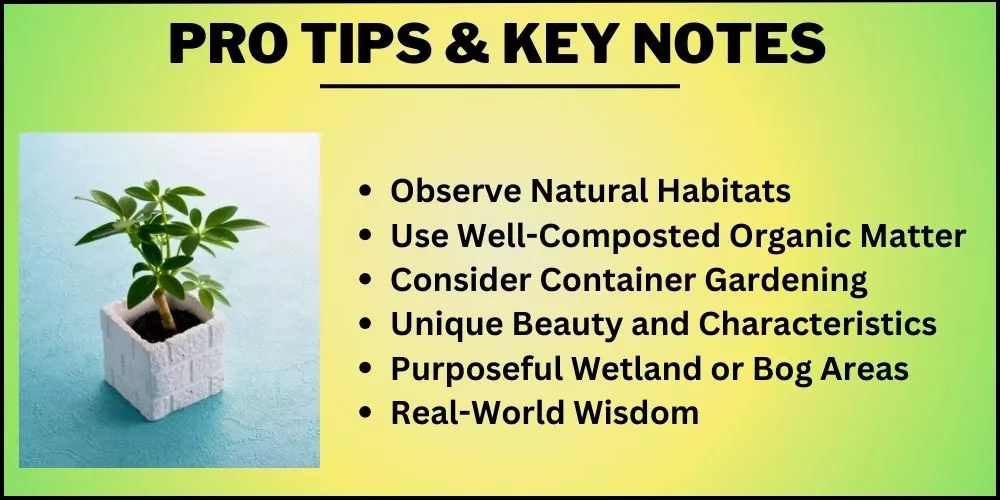
Observe Natural Habitats
First things first. Take a moment to study the natural habitat of the plants you’ve chosen. These plants have evolved to thrive in their native conditions, so mimicking this environment in your garden can go a long way.
For example, if you’re planting a bog plant, it won’t hurt to add some moss or organic matter around it to replicate its native peat bog setting.
Use Well-Composted Organic Matter
Add a layer of well-composted organic matter to your soil. Not only will this improve the soil’s water-holding capacity, but it’ll also do so without turning your garden into a mini-swamp. Your plants will have the moisture they need without the threat of root rot.
Consider Container Gardening
Let’s talk containers. Especially for those of you dealing with really challenging soil conditions, container gardening can be a lifesaver.
Containers allow you to control the soil, drainage, and even the microclimate around your plant. It’s like creating a little utopia for each of your leafy friends.
Unique Beauty and Characteristics
Don’t overlook the sheer beauty and unique characteristics of these plants. From the architectural forms of succulents to the lush green of bog plants, each has its own aesthetic appeal. They’re not just easy to care for; they’re also stunning additions to any space.
Purposeful Wetland or Bog Areas
Fancy turning part of your garden into a wetland or bog area? Not only does it look stunning, but it also serves an ecological purpose by attracting local fauna. Plus, it gives you an excellent reason to experiment with a variety of plants that love these conditions.
Real-World Wisdom
Here’s a quick anecdote for you. I once had a friend who swore by the ‘stick a finger in the soil’ test to determine when to water. She’d say, “If it feels dry up to the first knuckle, it’s time.” Simple yet effective, this tip has saved many plants from overwatering in her garden.
So, go ahead, give these tips a whirl. You’ll not only be doing your plants a favor, but you’ll also be part of a community that values both beauty and ecology. It’s like being a part of two worlds, both of which are a little greener because you’re in them.
Case Studies: Successful Low-Drainage Gardens
For all you green thumbs and aspiring gardeners out there, let’s talk examples. Sometimes the proof is in the pudding—or in our case, the mud. Let’s delve into a couple of case studies that beautifully showcase how low-drainage doesn’t have to mean low-impact or low-beauty.
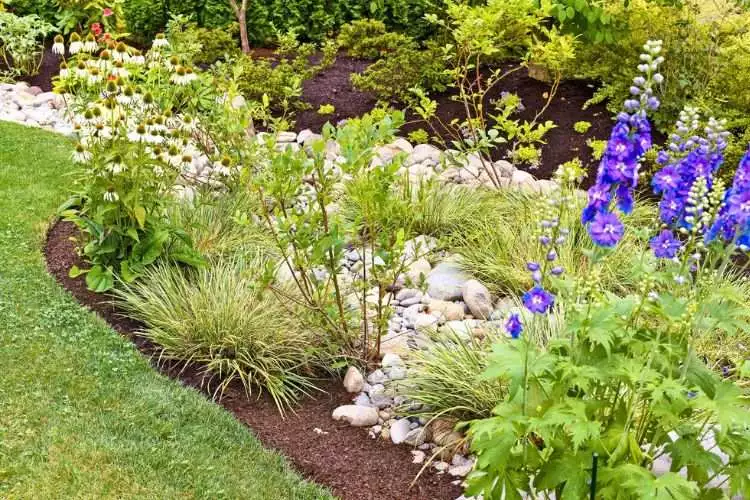
Here, you’ll discover how different plant types, from succulents to wetland wonders, create their own vibrant paradise in less-than-ideal drainage conditions. Let’s explore a couple of picturesque scenarios where low-drainage plants steal the show.
The Succulent Oasis in Arizona
- Varieties: A medley of Echeveria, Sempervivum, and Zebra cacti.
- Arrangement: Organized in raised beds and rock gardens for natural elevation.
- Unique Features: An in-ground irrigation system that mimics desert rainfall.
- Highlight: The breathtaking contrast of the succulents’ jewel-like colors against the arid backdrop of the Arizona desert.
The Backyard Bog in Maine
- Varieties: Sundews, Pitcher Plants, and Cattails.
- Arrangement: Scattered naturally within a dug-out shallow pond, mimicking a bog setting.
- Unique Features: A wooden boardwalk that allows for up-close observations.
- Highlight: The fascinating and slightly eerie allure of carnivorous plants right in a backyard setting.
The Rooftop Air Plant Escape in New York City
- Varieties: Spanish Moss, Tillandsia Ionantha, and Ball Moss.
- Arrangement: Suspended from a pergola and organized on driftwood displays.
- Unique Features: Solar-powered misters that provide humidity in the air.
- Highlight: The enchanting sight of air plants floating like ethereal clouds against the NYC skyline.
The English Wetland Fantasy
- Varieties: Water Lilies, Duckweed, and Reeds.
- Arrangement: Positioned within a man-made pond bordered by cobblestones.
- Unique Features: Birdhouses to encourage an ecosystem with local wildlife.
- Highlight: A secret garden feel, complete with flowering water plants and croaking frogs.
In each of these examples, the gardeners have turned a potential challenge—low-drainage conditions—into a celebrated feature. Whether it’s the arid beauty of succulents or the lush vibrancy of a homemade bog, these gardens are a testament to the diverse beauty that low-drainage plants offer.
Frequently Asked Questions (fAQs)
Can I grow regular garden plants in low-drainage areas?
Most garden plants prefer well-drained soil, but there are exceptions. Research the specific needs of each plant species before planting them in low-drainage areas.
How often should I water plants that don’t need much drainage?
The frequency varies by plant type, but a general rule is to wait for the soil to partially dry out. Always check the soil moisture before watering.
What are some indicators of overwatering in plants adapted to water-retentive soils?
Signs include yellow leaves, moldy or musty smell, and root rot. Overwatering can lead to reduced oxygen availability, impacting plant health.
Can I create an artificial bog or wetland area in my garden for these plants?
Absolutely, it’s a great ecological project. Make sure you have the right soil conditions and native plants to mimic a natural wetland habitat.
Should I avoid using traditional pots for plants that don’t require drainage?
Traditional pots can be used if they have good drainage holes. Otherwise, opt for specialized containers that allow for better water control.
Conclusion
So, there you have it—a comprehensive look at the beauty and utility of low-drainage plants.
From understanding the mechanics of soil drainage to exploring plants that revel in less-than-ideal conditions, you’re now equipped with the knowledge to turn any soggy patch into a thriving oasis.
Remember, the key to flourishing flora lies in understanding its natural habitat. So, take that adventurous step; experiment with different species and recreate a bit of their natural world in your own garden.
We hope that this guide on what plants don’t need drainage has been helpful. You can read about similar topics here on our website. Check back again soon for more.


